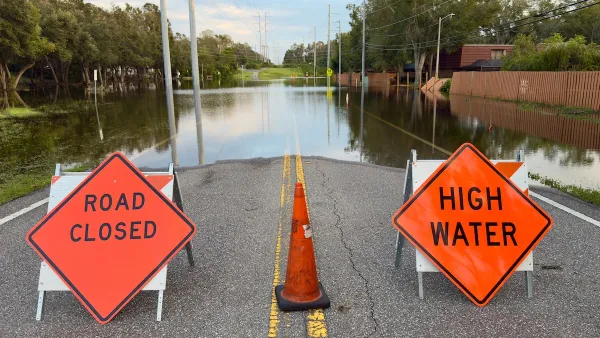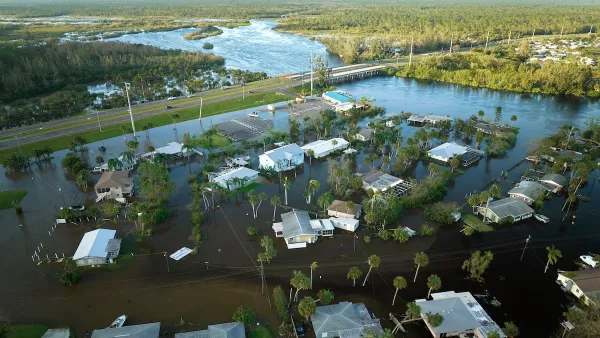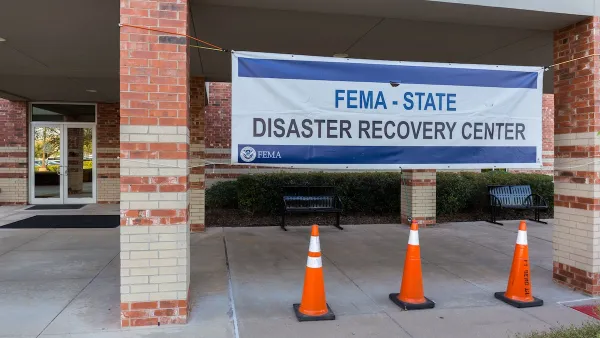Greg Hanscom reports on efforts by FEMA and the Green Building Council to incorporate "climate resiliency" into green building certification criteria in recognition of the increasing effects of climate change.
With the impacts of increasingly frequent severe storms already being felt across the country, and in the growing emergency response costs to government at all levels, FEMA recently joined the U.S. Green Building Council and researchers from the University of Michigan to roll out a new report [PDF] called Green Building and Climate Resilience.
With the report, which "went region-by-region to identify the risks associated with a changing climate" and the need to build for "climate resiliency," the Green Building Council, "an organization that has until now focused almost entirely on reducing our contributions to climate change, has turned its attention to the inevitable impacts of those contributions we've already made," writes Hanscom.
While some existing green strategies may help to mitigate the impacts of such threats as extreme heat events, more frequent droughts, higher-intensity hurricanes and storm surges, declining air quality, insect infestations, and more severe wildfire seasons, there is much more that can be done to prepare the built environment in our most vulnerable communities.
According to Hanscom, "It's early yet, but there may be a day when, if you want to get your house LEED certified, you'll need to prove not just that it is eco-friendly today, but that it can survive Mother Nature's worst in order to be so a few decades from now."
FULL STORY: Gimme bomb shelter: FEMA pushes for disaster-proof green buildings

National Parks Layoffs Will Cause Communities to Lose Billions
Thousands of essential park workers were laid off this week, just before the busy spring break season.

Retro-silient?: America’s First “Eco-burb,” The Woodlands Turns 50
A master-planned community north of Houston offers lessons on green infrastructure and resilient design, but falls short of its founder’s lofty affordability and walkability goals.

Delivering for America Plan Will Downgrade Mail Service in at Least 49.5 Percent of Zip Codes
Republican and Democrat lawmakers criticize the plan for its disproportionate negative impact on rural communities.

Test News Post 1
This is a summary

Test News Headline 46
Test for the image on the front page.

Balancing Bombs and Butterflies: How the National Guard Protects a Rare Species
The National Guard at Fort Indiantown Gap uses GIS technology and land management strategies to balance military training with conservation efforts, ensuring the survival of the rare eastern regal fritillary butterfly.
Urban Design for Planners 1: Software Tools
This six-course series explores essential urban design concepts using open source software and equips planners with the tools they need to participate fully in the urban design process.
Planning for Universal Design
Learn the tools for implementing Universal Design in planning regulations.
EMC Planning Group, Inc.
Planetizen
Planetizen
Mpact (formerly Rail~Volution)
Great Falls Development Authority, Inc.
HUDs Office of Policy Development and Research
NYU Wagner Graduate School of Public Service





























